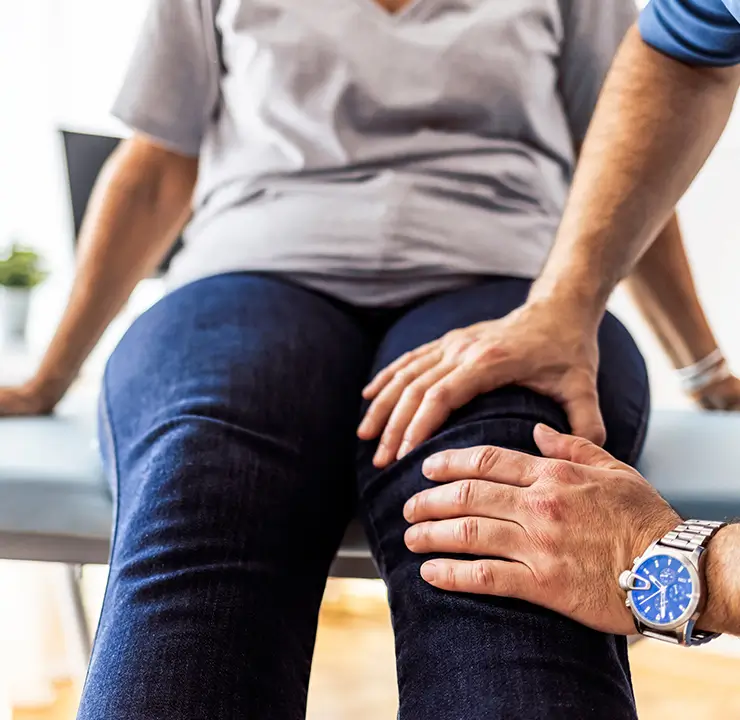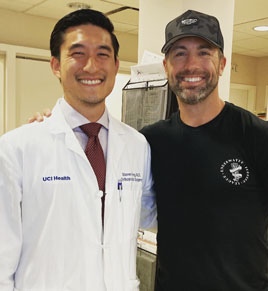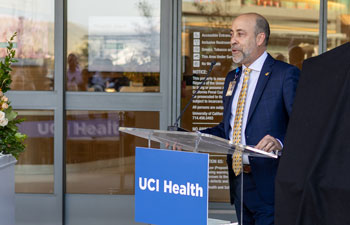
Knee Care
We understand how knee pain can impact your daily life. UCI Health orthopaedic specialists are here to diagnose and treat all types of knee conditions.

Don’t let knee pain keep you from living your best life
Our knee care specialists can get you up and moving, with comprehensive, outpatient care
Call 714-456-7012 to make an appointment with an knee care specialist.
Our approach to knee care
Initial screening
During your initial examination, your physicians will take X-rays of your knee, compare them to any previous images and conduct a full medical physical history and physical. They ask about your mobility limitations and functionality and examine your gait and range of motion.
Treatment plan
Once your condition is diagnosed, they will work closely with you to develop a treatment plan.
Your physician will exhaust all non-surgical options, working with a multidisciplinary team that includes other orthopaedic physicians, physical therapists and sports medicine specialists.
Knee surgery
When surgery is required, you can be assured that it will be as quick and painless a procedure as possible.
Depending on the surgery, 80-90% of UCI Health knee surgery patients fully recover in three months, with around 60% recovering by six weeks. You can expect to walk the same day, and most patients return home the same or following day, feeling fairly independent in their movements upon discharge.
Recovery
After your surgery, one of our nurse navigators will follow up with you within the week and check how you are recovering. Typically, you'll have home health physical therapy for the first six weeks, often working with a nurse who will come to your home. We also offer a medication pathway if you require lots of medication post-surgery. This reduces your risk of dependency by prescribing different medications that work synergistically.
Why choose UCI Health for knee care?
Experts in the field
The knee care physicians and surgeons at UCI Health are experts in treating every kind of knee condition, from degenerative diseases, to traumatic injuries, to sports injuries, to complications from surgery.
Comprehensive whole-person care
Our multidisciplinary teams work closely to provide you individually tailored, holistic care that can include surgical and non-surgical treatments, physical therapy and rehabilitation, medications and injections, and alternative therapies.
We are the only academic medical center in Orange County
Our team is trained in the leading-edge technologies, including robotically-assisted surgical equipment and the latest in specialized knee replacement surgery.
As Orange County’s only academic medical center, we have access to research that other hospitals don’t. For hip care, our physicians are currently involved with a number of studies and clinical trials that use stem cells for muscle regrowth.
Looking for more options?
View all clinicians
Find an orthopaedics clinical trial
Talk to your doctor to see if a orthopaedics clinical trial is right for you.
Featured Blog Posts

Live Well’s most popular stories of 2023
Take a peek at our readers' favorite articles of the year.

Partial knee replacement revitalizes life of Marine

A novel approach to treating knee arthritis
A first-in-human clinical trial shows promise as a nonsurgical way to keep aging knees strong and pain-free.
Featured News Stories

UCI Health celebrates more than 200 Physicians of Excellence
UCI Medical Center earns four-star patient experience rating from Medicare





